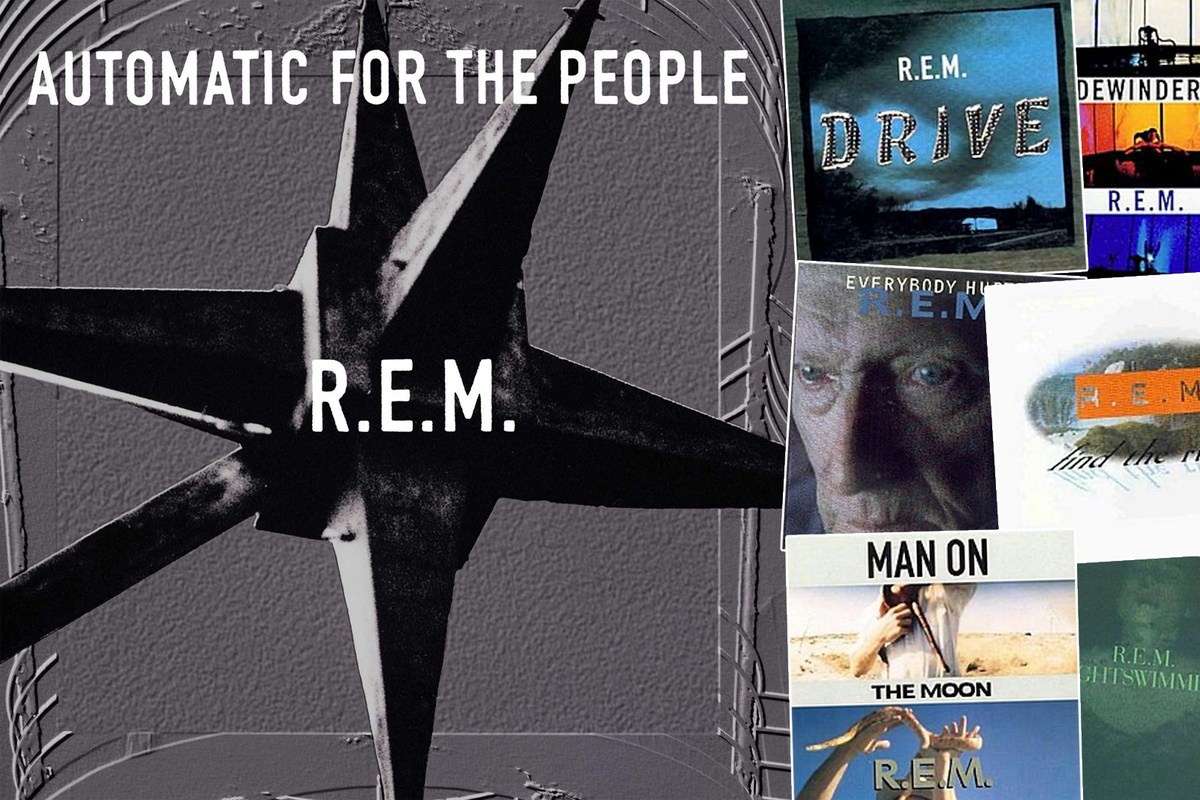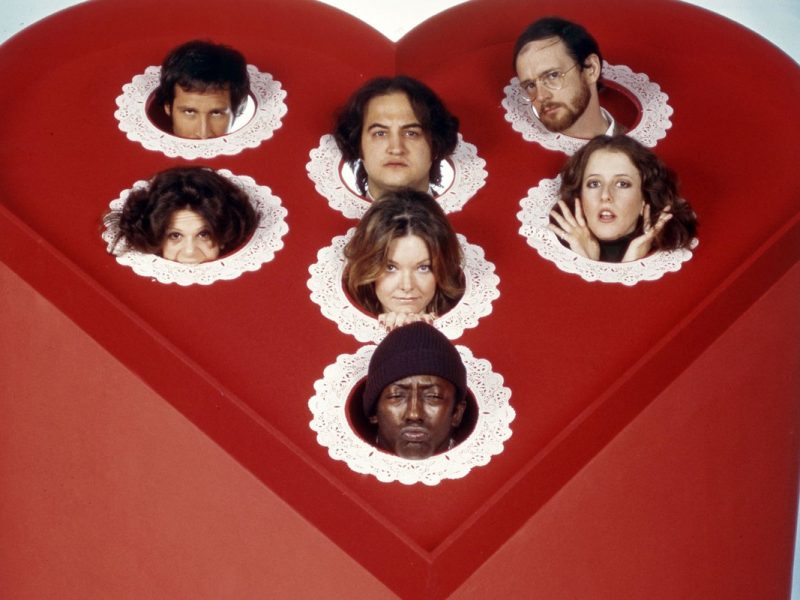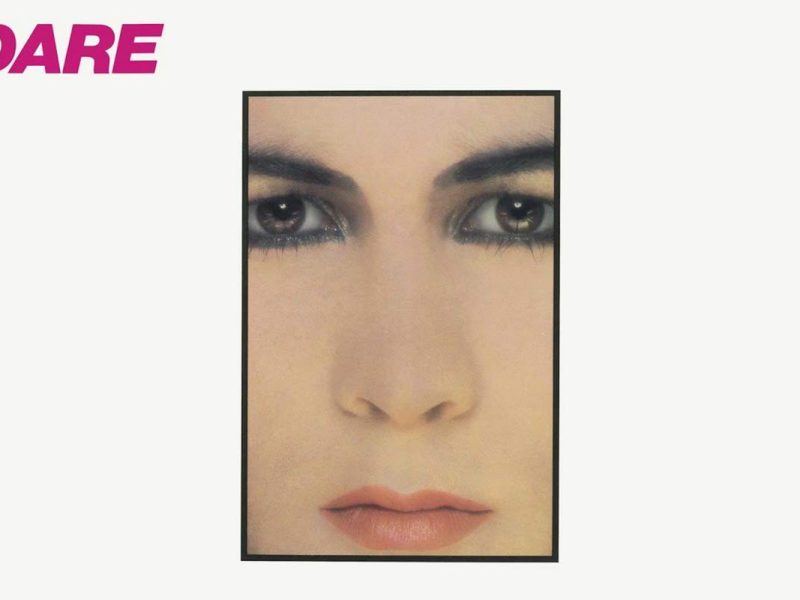R.E.M. wanted to rock. The delicate, intricate sounds on 1991’s Out of Time all but guaranteed that their next album would be bolder, rougher and louder.
Not that the band’s music required an about-face. Throughout 1991, Out of Time reached blockbuster proportions, a multiplatinum smash that was shooting to No. 1 (in the U.S., U.K. and other countries), pushed by the surprise popularity of the mandolin-affected “Losing My Religion.” R.E.M. was everywhere – in videos on MTV, on all types of radio stations, on MTV Unplugged, in TV and radio interviews. They were everywhere, except on tour.
Instead of a massive globe-spanning trek, like the one that followed 1988’s Green, R.E.M. kept it simple: a couple of months of promotion, a handful of broadcast gigs. Then, they could get back to making more music. This is exactly what happened in the late spring of 1991. Guitarist Peter Buck, bassist/keyboardist Mike Mills and drummer Bill Berry reconvened in R.E.M.’s hometown of Athens, Ga., to devote time to new material. Initially, the goal was to write rockier songs, up-tempo tunes, something that would clash with the mostly subdued mood of their most recent release.
“We wrote fast songs. But it’s funny: Fast songs are easier to write, but it seems like it’s harder to write good ones,” Mills told Rolling Stone in 1992. “This time, the slow ones sounded better.”
Although some songs would outpace a saunter (“The Sidewinder Sleeps Tonite,” “Ignoreland”), many of the new recordings were ballads awash in acoustic sounds, prominently featuring acoustic guitar, organ and piano. In the usual method of R.E.M. creation, Buck, Mills and Berry presented a couple of dozen demo recordings to singer Michael Stipe, who in turn wrote lyrics to the songs that most inspired him. Stipe’s initial take: “Pretty fucking weird. More acoustic, more organ-based, less drums.”
Watch R.E.M.’s ‘Nightswimming’ Video
The one exception to the music-then-lyrics operating procedure was “Nightswimming,” which originated with Stipe’s poetry about the remembrance (and passing) of youth. In a rare occurrence, the singer took already completed lyrics to bandmates Buck and Mills.
“Being competitive bastards that we are, Mike and I started auditioning chord changes and tunes for Michael,” Buck said in the liner notes to In Time: The Best of R.E.M. 1988-2003. “The two tunes of mine that Michael rejected eventually became ‘Drive’ and ‘Try Not to Breathe.’ Mike had a piano instrumental that he played to Michael. He listened once, nodded his head to hear it again, and on the second pass he sang the lyrics. It was ‘Nightswimming,’ exactly like the record we would record a year later. I was standing in the corner dumbfounded.”
The moment that Buck describes happened when R.E.M. was finishing and mixing Out of Time in late 1990 at Prince’s Paisley Park Studios in Minnesota. They recorded “Nightswimming” along with instrumental versions of “Drive” and “Try Not to Breathe” as demos; maybe they’d become B-sides or even tracks on future albums. As it would happen, after R.E.M.’s brief attempt at making a big rock release, these three recordings set the tone for the new album.
So did the moods of the band members. Primary lyricist Stipe appeared obsessed with mortality. Buck felt the music had something to do not just with aging (the guys were now all over 30), but also with the changes in R.E.M.’s community.
“The world that we had been involved in had disappeared, the world of Husker Du and the Replacements, all that had gone, all those bands were broken up or in the process of breaking up,” the guitarist said in R.E.M.: Fiction: An Alternative Biography. “We were just in a different place and that worked its way out musically.”
Those melancholy feelings, and a sense of loss, permeated the sounds and words of the 12 songs that would become Automatic for the People. Stipe viewed childhood and adolescence in the rear-view mirror, from sepia-toned teenage indiscretions (“Nightswimming”) to “a reading from Dr. Seuss” (followed by an audible laugh on “The Sidewinder Sleeps Tonite”). Insidious politics took root in “Ignoreland,” real life was compared to reel life in “Monty Got a Raw Deal” (which contained the observation that “nonsense has a welcome ring”) and death dominated many of the other songs (among them “Try Not to Breathe” and “Sweetness Follows”).
Watch R.E.M.’s ‘Man on the Moon’ Video
The twangy, mid-tempo sing-along “Man on the Moon” might be the album’s focal point, combining most of these themes, including references to childhood favorites (“Let’s play Twister, let’s play Risk”), questions about the reality of what is presented on a screen (“If you believed … ”) and notions of immortality, whether actual or imagined. It all revolves around the song’s central figure, comedian Andy Kaufman, who died (or did he?) in 1984. “Man on the Moon” seems to take solace in the idea that maybe, just maybe, Andy’s still out there, wrestling.
When fans and writers discuss Automatic for the People, they gravitate to the darkness of the album, the meditations on death, mourning and grief. All of that is in there, certainly, but the album also presents more than a modicum of hope. The acoustic brambles of “Drive” might prove an austere entry point, but Stipe (via David Essex) is reminding the kids out there that they’re in control. Parting shot “Find the River” is awash in the nearness of death, with the narrator reminding us, before he and the album fade away, that “all of this is coming your way” – the good, the bad, all of the elements that compose a life.
Watch R.E.M.’s ‘Find the River’ Video
But R.E.M.’s most hopeful moment on the album is “Everybody Hurts,” which slices through years of murmured Stipe vocals to channel a clear idea: “No, no, no – you’re not alone.” Drummer Berry was the prime mover on this humanistic, Stax-ish ballad, which became a radio hit with a message that not only resonated with listeners but caused some to think twice about committing suicide.
“It saved a few. People have told me,” Stipe revealed to Mojo. “And I love hearing that. That’s for me, that’s my Oscar, that’s my gold on a shelf right there… that something we did impacted someone’s life in such a profound way. That’s a beautiful thing.”
“Everybody Hurts,” like the majority of tracks on Automatic for the People, took shape over months, featuring a progression of work in multiple studios. Demos were created at the R.E.M.-favored John Keane Studios in Athens and at Daniel Lanois’ Kingsway Studio in New Orleans – which boasted some album-ready material with “Drive” and, obviously, “New Orleans Instrumental No. 1.” The bulk of the recording was done with producer Scott Litt (who had teamed with the band on their previous three albums) in March and April of ’92 at Bearsville Sound Studios in Woodstock, New York. More recording was done in May at Miami’s Criteria Studios (where Stipe took the cover photo of a motel sign’s star ornament) before the final touches and mixes were done in June at Bad Animals in Seattle.
Along the way, the band decided that some of the songs would benefit from the addition of strings. But the quartet thought better of taking the DIY approach to orchestration, as they had done on Out of Time. Instead, they called on former Led Zeppelin member John Paul Jones to see if he would arrange the strings for “Everybody Hurts,” “Drive,” “Nightswimming” and “The Sidewinder Sleeps Tonite.” He agreed and flew to Georgia to record the parts with the Atlanta Symphony Orchestra.
Watch R.E.M.’s ‘The Sidewinder Sleeps Tonight’ Video
“John Paul Jones really added an extra element to this record that the last one didn’t have, even though it had strings,” Berry said in a promotional video. “Those were basically our string parts that we kinda hummed along to the symphony and they kinda struggled with it. But John Paul Jones came in with, you know, charts and definite ideas. And he really directed that portion of the record.”
In addition, Psychedelic Furs collaborator Knox Chandler added “aggressive” cello playing to “Monty Got a Raw Deal” and “Sweetness Follows,” bringing such a depth of sound to the latter that R.E.M. removed Mills’ bass part from the track. Producer Litt even joined the parade of extra instrumentation, with touches of clarinet and harmonica to “Ignoreland.”
Automatic for the People – named after a slogan at Athens soul food establishment Weaver D’s – was released by Warner Bros. on Oct. 5, 1992. Although R.E.M. was uncertain about the commercial potential of their eighth studio album given its difficult subject matter and acoustic aesthetic, the record proved to be nearly as big a hit as Out of Time. It went platinum a couple of times over, topped out at No. 2 on the Billboard album chart (No. 1 in the U.K.) and produced three Top 40 U.S. hits (five in Britain). To date, it has sold more than 18 million copies worldwide. Reviews, including a rare five-star write-up from Rolling Stone, were the most uniformly positive since the beginning of R.E.M.’s career.
Although fans took to the album, they were disappointed by the news that the band would again opt not to mount a tour in the wake of an album’s release. Rumors swirled around Stipe’s health (with some fearing that the bisexual singer had secretly contracted AIDS) but were dispelled by his bandmates. R.E.M. simply didn’t feel that the time, or the Automatic material, was right for a giant tour.
“We couldn’t tour behind Out of Time or Automatic for the People,” Stipe told Salon in 2011. “It was all beautifully orchestrated slow songs and that doesn’t really fly at a festival in Belgium in front of 45,000 people who have been there for three days and are drunk and tired and muddy. You can’t do that.”
Not only was there not going to be a tour in 1992 (or 1993, or 1994), there wasn’t even a barrage of special performances similar to what had followed Out of Time: No Unplugged, no Saturday Night Live, no in-studio radio concerts. Except for one November benefit show in Athens and a smattering of print and broadcast interviews, Automatic for the People was left to stand on its merits as a recording (in a way that no R.E.M. album before, or until Collapse Into Now, did). That probably had plenty to do with crystalizing the popular opinion that the album was a substantial, complete work.
Watch R.E.M.’s ‘Everybody Hurts’ Video
The lack of a tour also increased the importance of the videos paired with the record’s singles. As the ’80s wound down, R.E.M. came to be known for their artistic, clever music videos, before “Losing My Religion” cemented the band’s stardom by exploding all over MTV in 1991. The Automatic videos only enhanced the band’s reputation. Many of them remain the most memorable and iconic in the band’s oeuvre, from Stipe as a silver screen drifter in “Man on the Moon” to the slow-motion crowd surfing in “Drive” to an epic traffic jam (and amusing/devastating subtitles) in “Everybody Hurts.” With the band off the road, these clips helped define R.E.M. to millions of fans.
But none of those images would have resonated if not for the haunting, elaborate and stirring sounds of Automatic for the People. Decades later, fans and rock writers consider the album to be one of R.E.M.’s masterpieces (and, according to some, their greatest recorded achievement). Even all four members of R.E.M. agree that the album ranks among their very best moments – something that at least Buck was self-aware enough to assess shortly after its release.
“Automatic is the album that I think will hold up best, the one people may think is pretty good 10 years from now,” Buck told the Chicago Tribune in 1994. “I was driving through the desert with a friend listening to it and saying, ‘We should probably break up. This would be a good place to stop.’”
Top 100 ’90s Rock Albums
Any discussion of the Top 100 ’90s Rock Albums will have to include some grunge, and this one is no different.



